Bangladeshi architecture at the MoMA in New York: What it means for us

A "groundbreaking" exhibition on post-Partition architecture in South Asia has just concluded on July 2, 2022, in one of New York City's most powerful cultural institutions, the Museum of Modern Art (MoMA), after a five-month run. Serving as a member of the show's curatorial advisory board, I had the good fortune of attending its premiere back in February. For me, the show, "The Project of Independence: Architectures of Decolonisation in South Asia, 1947–1985," raised a set of provocative questions: What did the idea of independence imply for the built environment in the newly decolonised countries in South Asia, in the violent wake of Partition in 1947? Do elite Western cultural institutions continue to demonstrate what Edward Said called "cultural imperialism" in explaining the "rest of the world"? Most importantly, does this exhibition shed any new light on how people in South Asia process the lessons of history?
Against the politically charged backdrop of these historical questions, the MoMA exhibition sought to examine how architecture and city planning served postcolonial development in Bangladesh (formerly East Pakistan), India, Pakistan, and Sri Lanka (formerly Ceylon). The show's six themes – New Cities, Templates for Living, Industry and Infrastructure, Political Spaces, Landscapes of Education, and Institution Building – helped weave a complex narrative on how political leaders, bureaucrats, architects, engineers, and other practitioners of the built environment in these countries collaborated to imagine the future of their respective nations.
Having seen the exhibition, I was both excited and disappointed. Excited because Bangladesh was represented prominently, although only through architect Muzharul Islam's works, Louis Kahn's Parliament building, and Kamalapur Railway Station. The absence of Constantino Doxiadis' TSC, Bashirul Haq's brick buildings, and Syed Mainul Hossain's National Martyr's Memorial surprised me. And disappointed because the MoMA, it seemed to me, failed to capture the rich array of political contradictions that informed South Asian cultural endeavours in the aftermath of Partition.

Why is Partition such an important marker in political and cultural histories of South Asia? The splitting in two of British India to make Hindu-majority India and Muslim-majority Pakistan – along with the further carving up of Pakistan into two parts separated by a thousand miles of Indian territory – resulted in one of history's largest mass migrations. Overnight, people abandoned homes, property, and the tenor of coexistence that had defined lives for centuries on the Indian subcontinent. Millions of Hindus and Muslims sought refuge in opposite directions. What emerged in the aftermath – besides bigotry and murderous mayhem – was the predicament of having to define oneself according to invented boundaries, lines that had been drawn by Cyril Radcliffe, a British judge assigned by the imperial authority to remake the regional map. Mahatma Gandhi described Partition as "the vivisection of India."
The idea of independence was burdened, in each newly minted nation-state, by these tragedies and dilemmas of division, as well as by the complications of postcolonial uncertainty and uneven entanglements with notions of modernity. When India's first post-independence prime minister, Jawaharlal Nehru, referred to hydroelectric dams as "temples of the new age," for instance, he deployed competing metaphors to present a national agenda for development. On one hand, he celebrated independence as a "new age" ushering in a triumphant future; on the other, that future could only be envisioned by invoking the historicity and religiosity of temples. The MoMA exhibition seemed to have missed an opportunity to represent the generative power of such contradictions.

Let us consider Muzharul Islam, Bangladesh's first professionally trained architect, who came home in 1952 after receiving his Bachelor of Architecture at the University of Oregon. In a review for Places Journal, I wrote: "Like many secular-minded Bengalis, he was disillusioned by the imposition of a pan-Islamic polity, instrumentalised by officials to cement the idea of Pakistan. The draconian attempt to impose Urdu – the language of the ruling elite in West Pakistan – as the national language hurt the pride of East Pakistanis like Islam, who spoke Bengali and felt marginalised by the economic and political asymmetries already taking hold between the two parts of the new country. East Pakistan's agitation against West Pakistani military regimes eventually led to a secessionist war and, in 1971, to the creation of Bangladesh. Accordingly, unlike most Indians and Pakistanis, the majority of Bangladeshis enshrine 1971, rather than 1947, as the momentous year of their national history."

Muzharul Islam's aesthetic politics was deeply nuanced. He articulated a modernist visual language – for instance in the Institute of Fine Arts, Dhaka University (1953-56), represented at MoMA with a beautifully crafted model – that was intended to purge East Pakistani architecture of Islamist symbolism or Indo-Saracenic references, since these were likely to be seen as signifiers of political religiosity. In his other works of the period, also on view in The Project of Independence – the University of Dhaka Library (1953-54) and Chittagong University (1965-71) – Islam deployed a modernist idiom to bridge Bengali culture's syncretic approach to faith and embrace of universal humanism as championed by Rabindranath Tagore into the cosmopolitan sensibilities of a global citizen.
Despite my unease with the MoMA's failure to highlight the nuance of diverse political contexts from which architecture and city planning in South Asia emerged after Partition, I felt that the exhibition could not have come at a better moment. It can serve as a potent reminder for our ethical responsibility to preserve the mid-century buildings that tell our stories and reveal the politics of nation-building. The prevailing culture, beholden as it is to swanky visions of "smart cities," seems to view history as an aberration, and the demolition of cultural patrimony has been normalised as development. To encounter, in the MoMA gallery, the photographs of Daniel Dunham and Robert Boughey's Kamalapur Railway Station is to recall that one of South Asia's first examples of "tropical modernism" has reportedly been slated for demolition. A similar fate, I heard from a reliable source, awaits TSC too. It is heartbreaking and suicidal.
We must preserve our history narrated by our built heritage. If the global community values what we have in our midst and we don't, it would mean that the oft-repeated narrative of our national progress is not holistic. The cost of our asymmetric and uneven aspiration would be too great. As Prime Minister Sheikh Hasina has shown, we can conquer a difficult river like the Padma with our own resolve and resources. Protecting our cherished history that some of our buildings embody should be a much simpler challenge.
Adnan Zillur Morshed, PhD, is an architect, architectural historian, and urbanist. He teaches in Washington, DC, and serves as executive director of the Centre for Inclusive Architecture and Urbanism at Brac University. His books include DAC: Dhaka in Twenty-Five Buildings (Altrim Publishers, 2017). A longer version of this article was originally published in Places Journal in May 2022.
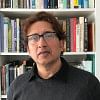
 For all latest news, follow The Daily Star's Google News channel.
For all latest news, follow The Daily Star's Google News channel. 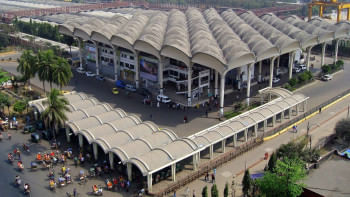


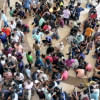
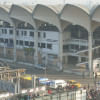

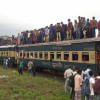
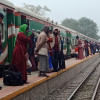


Comments